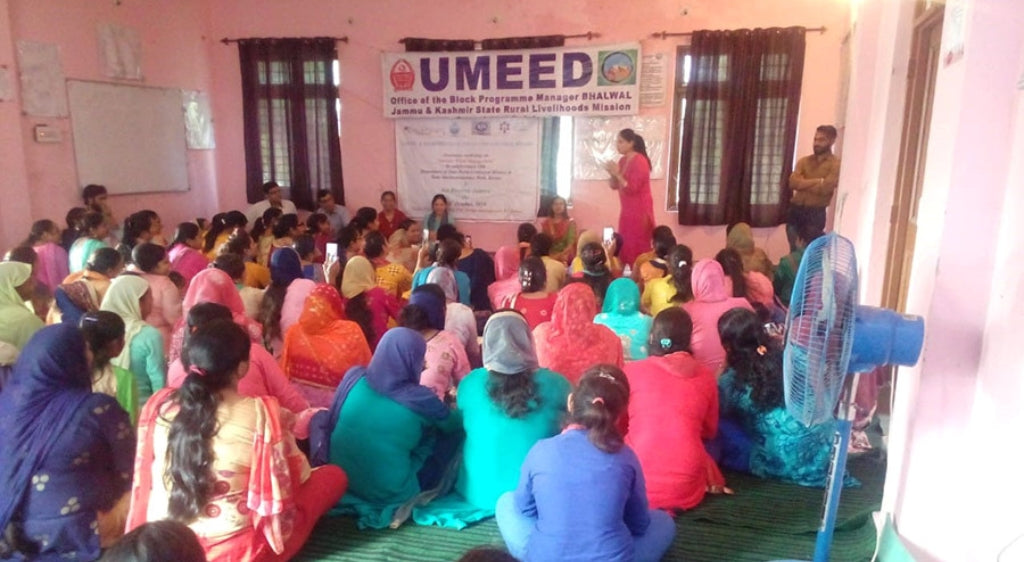
For Ourselves and Our Planet

The super absorbency and the pure white color of disposable sanitary pads come with a price. Research shows that disposable pads contain super-absorbent polymers mixed with bleached cellulose fiber.
Super-absorbent polymers are sodium salts of poly acrylic acid, capable of absorbing water, up to 30 times their weight. They have the side effect of absorbing moisture from our sensitive skin, causing rashes.
In a survey conducted with 86 Saukhyam pad users,
Chlorine, used as a bleaching agent to get the pure white color, leaves dioxin residue. These carcinogenic dioxins are easily absorbable and can stay in our bodies for a long time, causing many health problems and poisoning our immune and reproductive systems.
In September 2007, the EPA (Environmental Protection Agency) in the US announced their findings that dioxins are non-biodegradable and self-replicating, and therefore concluded that there can be no safe and acceptable limits for exposure to dioxins.
Recent studies have shown that the super absorbent nature of disposable tampons and sanitary pads allows for the growth and accumulation of bacteria, which in some cases can lead to the life-threatening Toxic Shock Syndrome (TSS). It’s becoming increasingly clear that the alarming increase in the number of young women becoming burdened with medical problems directly related to chemicals present in the sanitary napkins and tampons.
When we throw away a disposable tampon or pad, we seldom think about where it goes. The reality is we are placing a very real burden on Mother Nature by piling up these disposable products in landfills. More than 90% of a sanitary pad is plastic. From the top dri-weave layer made of polypropylene to the padding which contains super absorbent polymers to the leak proof layer made of impermeable polyethylene, these products are fundamentally unfriendly to the environment. Commercial disposable sanitary products not only pose direct health hazards to our bodies, after disposal they constitute an environmental hazard, a chemical cocktail of dioxins, furan, pesticides and other endocrine disruptors. The chemicals used in producing sanitary products get further transferred between soil, water and air. According to the statistics available every woman generates 62,415 pounds of waste from disposing sanitary products alone. These products are either incinerated, which releases harmful gasses and toxic waste, or sent to the landfills where they take hundreds of years to break down. It is up to each of us to consider how the products we purchase, use and dispose impact our environment – the land, our water and the ocean. Each of those tampons and pads has an environmental impact –not only the product itself, but the packaging, plastic or cardboard applicators. With a responsibility to preserve our planet for our children, making the conscious switch to a more sustainable solution allows us to play our part in minimizing the environmental impact of an ever-growing human population. The menstrual cycle is a natural process and is a reminder of the unique power of women to create and sustain life. Let’s ensure that the sanitary products we choose sustain our planet, too.
- Suneetha

















